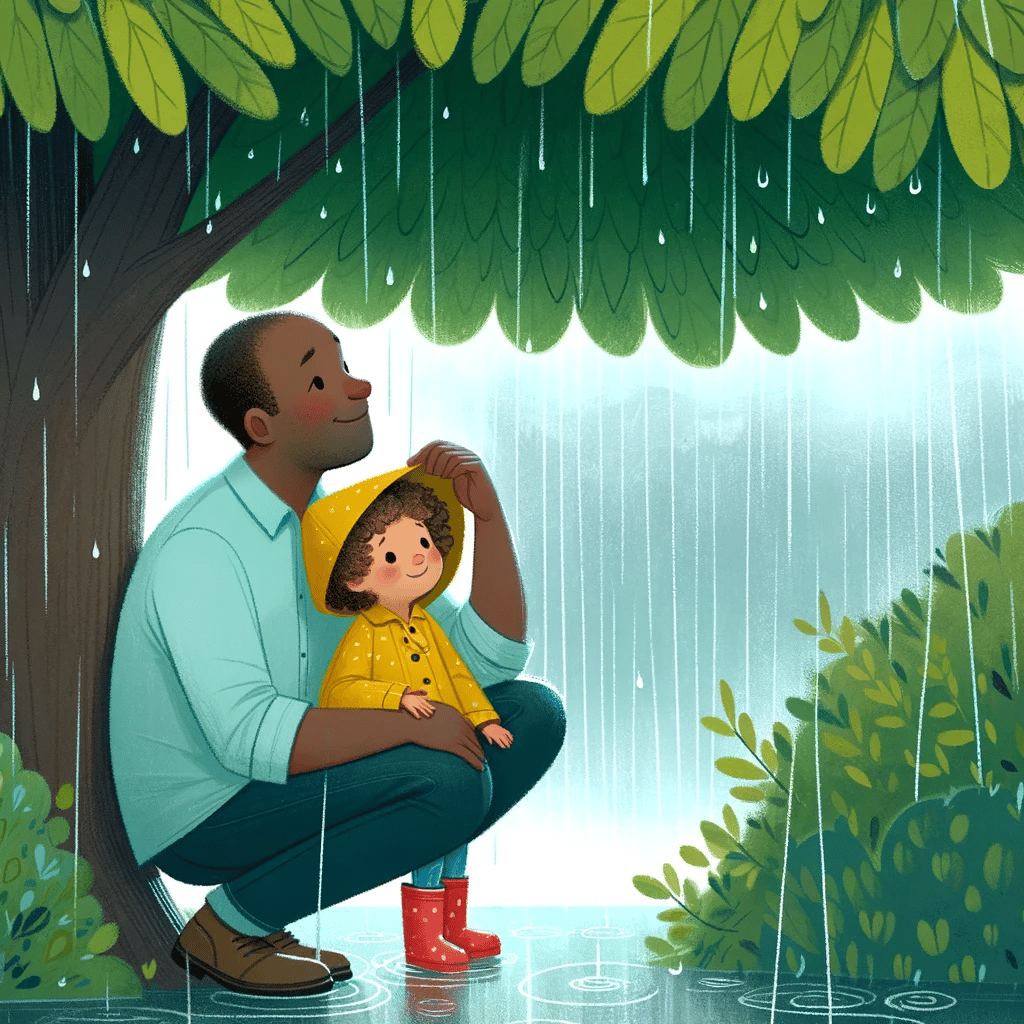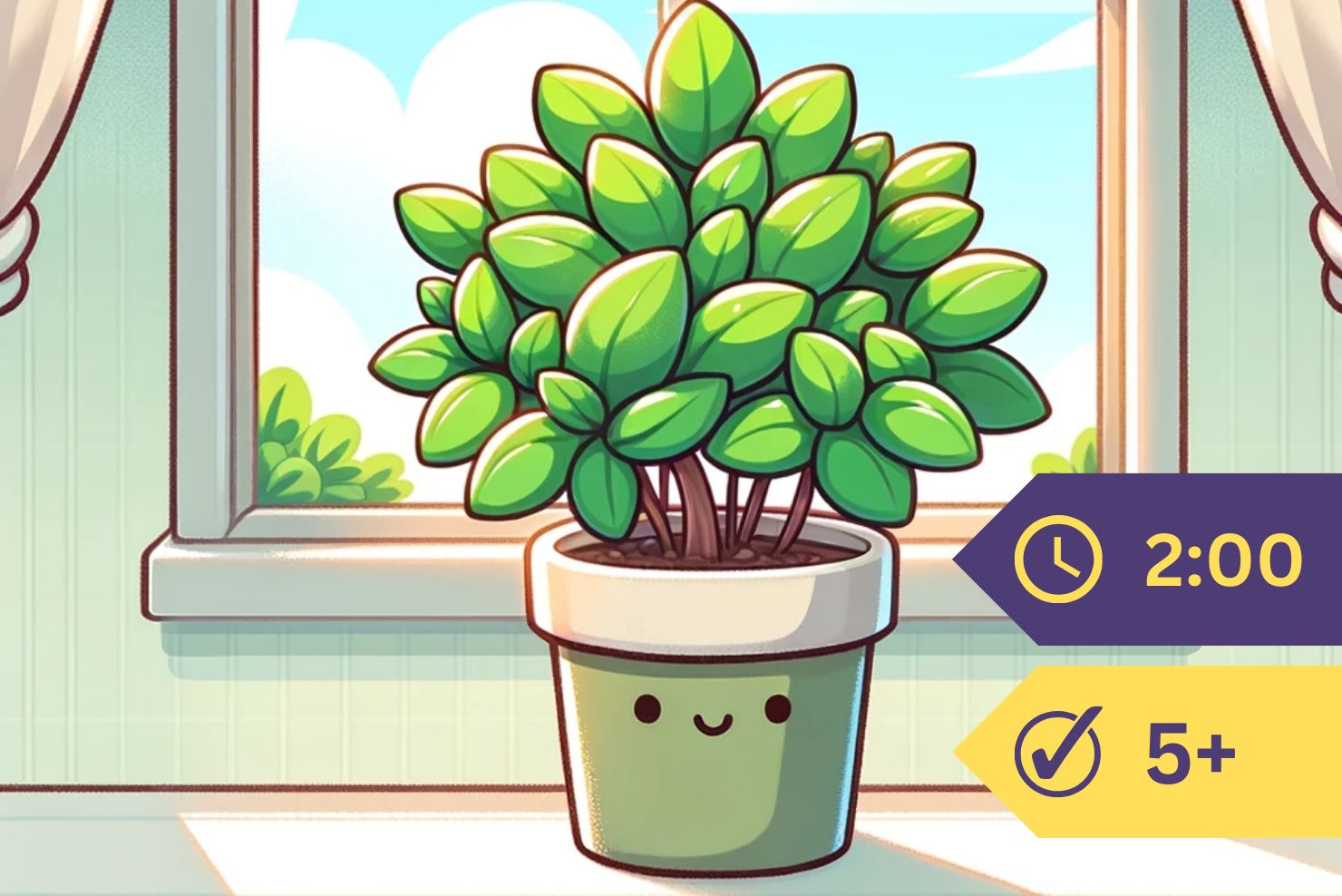You will be surprised to learn that the way in which a plant’s leaves grow tells us something of the way in which its roots grow.
Many of you have been overtaken far from home in a rainstorm, and have sought shelter under a spreading tree. The ground directly beneath the tree has kept almost dry even after some hours of rain, but the earth just under the tips of the spreading branches got very wet: for the great tree acted like a large umbrella; and when the raindrops fell upon the smooth leaves, which sloped outward and downward, they rolled from leaf to leaf till they reached the very lowest, outermost leaves of all. From these they fell to the ground, just as the drops that gather upon your umbrella run outward and downward to the umbrella’s edge, and then off upon the ground.
So you can see that the circle of earth which marks the spread of the branches above must be specially wet, as it received a great part of the rain which fell upon the whole tree.
And whenever you see a tree which sheds the rain water in such a circle, you can be pretty sure that, if you should dig into the earth a ditch which followed this circle, you would soon reach the tips of the new root branches of the tree.

You know that the root does the drinking for the plant; and only the newest parts of the root, the fresh root tips, are really good for work of this sort. You remember that the earth food is carried up the stem to the leaves in a watery broth; and that if the water supply should give out, the new plant cells would not get the broth which helps them to grow, and to put out other cells, and so to build up the plant.
Now, as only the new root branches, near their tips, are able to drink, if the water should leak through the earth in equal quantities everywhere, much of it would be wasted; but when this water is collected in certain spots within reach of the new root branches, there is good reason to believe that these will be able to satisfy their thirst.
By the shedding of the rain from the tips of the spreading branches above, the water is collected in a ring, and so sinks into the earth; and the root branches below spread out in just the same direction as the tree branches above, till they find what they need, and drink their fill.

So by the way in which a tree sheds the rain, you can tell just where its root branches reach out underground.
In smaller plants you see much the same thing. This picture shows a plant called the Caladium. You can see that the raindrops must roll outward down these leaves, and fall upon the earth just above the tips of the root branches.
The picture below shows you the rhubarb plant. This has quite a different sort of root. Now, if the rhubarb leaves were like those of the Caladium, unless the rhubarb root-branches changed their direction, these root-branches would grow very thirsty indeed.

But as it is, the water pours down these leaves toward the center of the plant, and reaches the ground almost directly over the straight, fleshy root, with its downward-growing branches; and we see that these root-branches are watered by the leaves above just as carefully as are those of the Caladium.
By knowing one thing about a plant, often you can guess that another thing is so.
You understand now that when the leaves of a plant shed rain water after the fashion of the Caladium, the chances are that its root-branches spread out as far as the drip of the water; and that the root of the rhubarb points almost straight downward, is told you by the drip of water from the rhubarb leaves.







